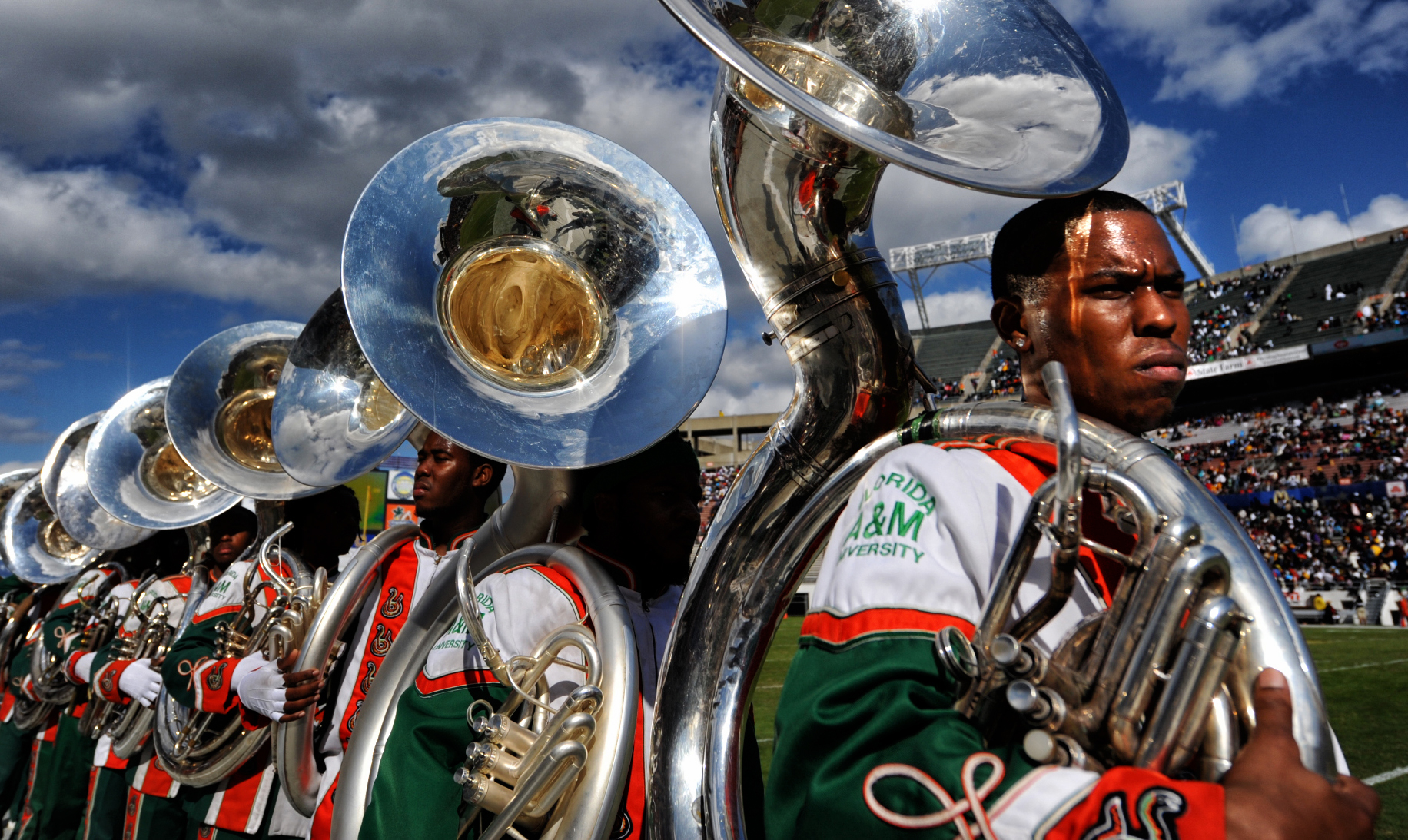A line of sousaphonists from FAMU’s Marchinng 100.
I first saw the Florida Agricultural & Mechanical University’s (FAMU) marching band - the Marching 100 - over 20 years ago.
It was halftime at a Jacksonville Jaguars game and I wanted to go inside - probably for some chicken fingers - but my mom insisted we stay. FAMU’s marching band were performing for the half time show.
I begrudgingly sat with her. Until that point, I thought of marching bands as a rather boring distraction from football.
FAMU changed that in one 10 minute performance. The music was good, the dancing was incredible and the energy was contagious.
Twelve years after that first show, I was working on assignment for Sports Illustrated, experimenting with video and multi-media. FAMU’s marching band seemed a perfect story for that format - great visuals, lots of motion and original music.
in he stands with the Marching 100 at a football game at Bethune-Cookman.
The year was 2008, the month November. Barack Obama had just been elected the 44th president of the United States of America, and I was in Tallahassee, FL, at one of our country’s largest and best historically black colleges,(FAMU), to watch their famed marching band - the Marching 100 - practice precision.
The excitement over the election at FAMU was palpable. Their entire halftime routine revolved around the 44th President Elect. In the stands you could buy t-shirts with Barack Obama's face in FAMU orange.
The band members were particularly excited because they had been asked to perform at his inauguration. They had performed at inaugurations in the past, but the significance of this inauguration was not lost on anyone. An historically black marching band would get to perform during the historic first day of our first black president.
At that time in camera history, November of 2008, Nikon had recently released the first ever DSLR camera with video recording capabilities, the Nikon D90.
I previously had worked on a couple multi-media stories, but had only used a dedicated video camera to record motion. The videos worked, but they weren’t great. I didn’t fully understand how to use a video camera and definitely couldn’t control it the same way I could a DSLR. The D90 gave me the ability to record video using all the lenses I had access to in a format I was already familiar with.
I spent close to a week in total with the band. I recorded several practices in Tallahassee, followed them to a football game at Bethune-Cookman in Daytona, and the Florida Battle-of-the-Bands competition in Orlando.
Dr. White, who was the band director at the time, welcomed our team with open arms, giving us total access to his band and all it’s nearly 450 members.
We became particularly close with Ralph Jean-Paul, a senior sousaphone player and president of the band. He was smart and dedicated. After graduation he was hoping to get an advanced degree, then maybe become a teacher or conductor, or both.
Music and the Marching 100 were his life and he taught us much of the inner workings of the band. Before every practice he gave us a breakdown of what was going to happen, where the best places to stand would be, at what point we could walk through the formation.
When we wanted to make a portrait of every member of the band (or at least every member that wanted to be included) for the multi-media, he helped organize it.
When we needed a catchy solo for the video, he recorded it.
Since this story was published, the Marching 100 found themselves in trouble. In 2012, a band member, Robert Champion, was killed due to extreme hazing. Dr. White resigned amid the controversy and all band activity was suspended indefinitely.
They reorganized in 2013 under new leadership and with at least one familiar face - Ralph Jean-Paul runs the band's brass section and is an assistant director, teaching and conducting with the band he loves.



